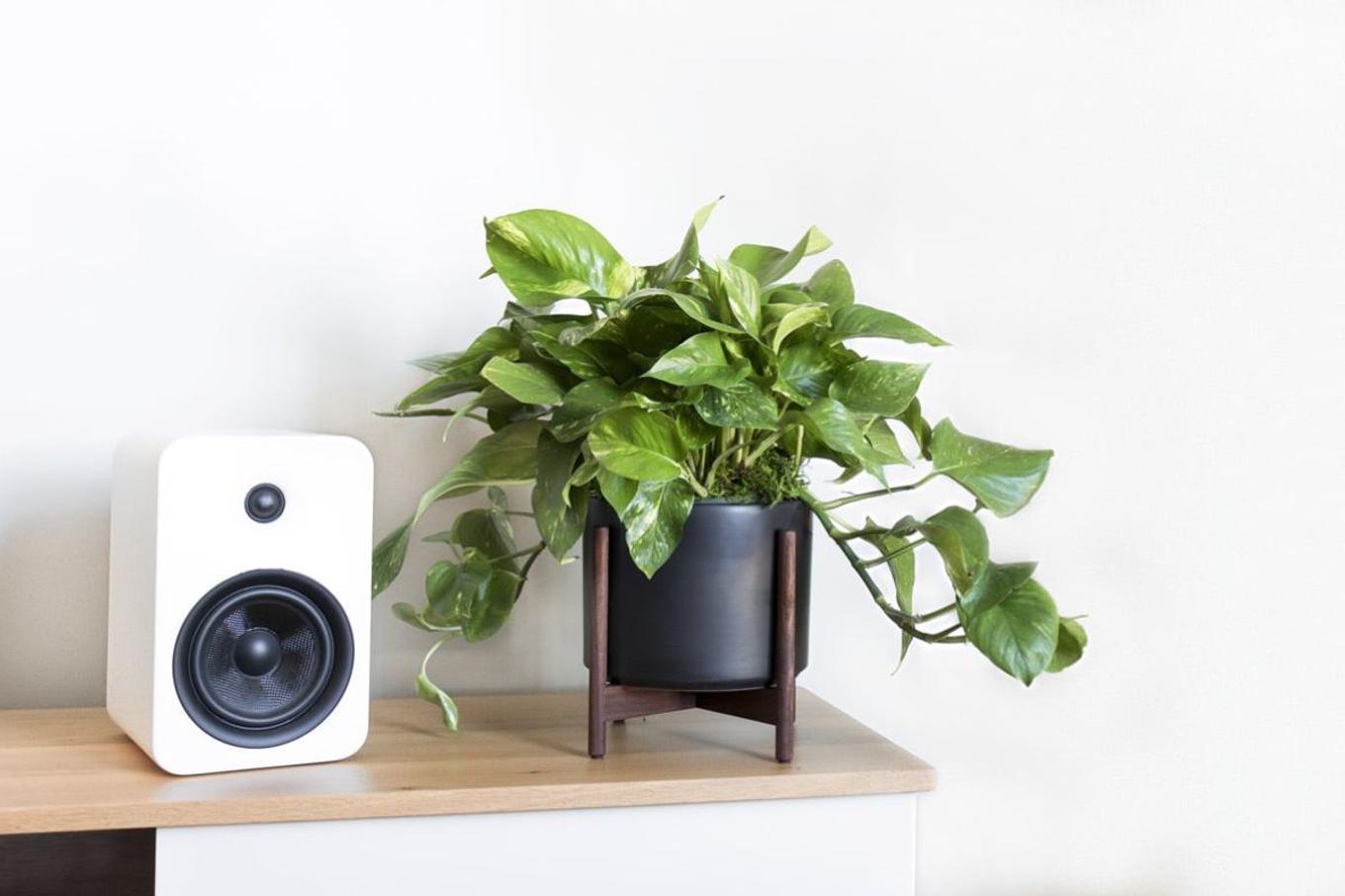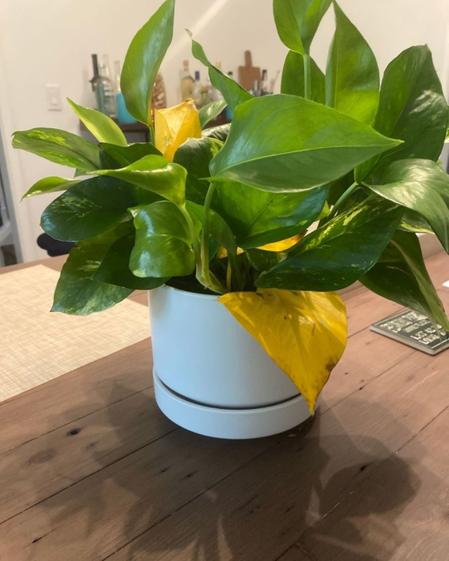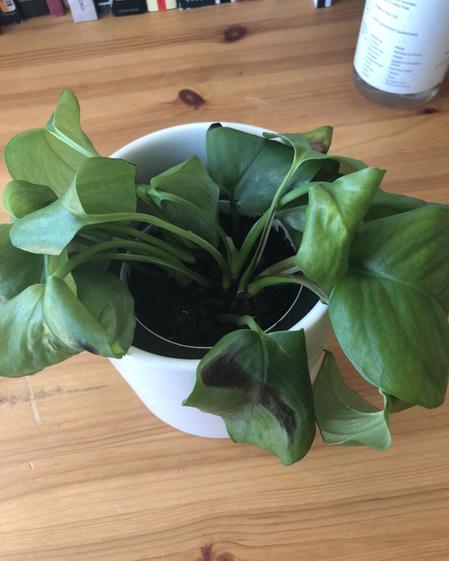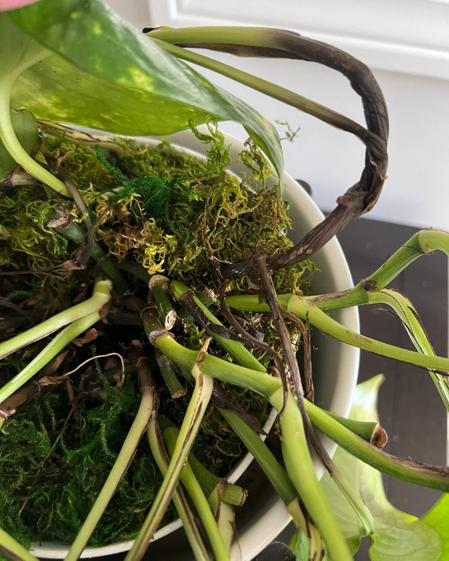Pothos Care Guide

Known for its lush, trailing vines and nearly indestructible nature, the Pothos—sometimes called Devil’s Ivy—is a favorite for both beginner and seasoned plant parents. This easygoing houseplant has many varieties, including the N'Joy Pothos, the Jade Pothos and the Golden Pothos, and thrives in a variety of conditions and adds instant greenery to any space. In this guide, you’ll learn everything you need to know about Pothos plant care, including how much light it needs, when to water, and how to solve common issues to keep your plant healthy and vibrant.
Simple Care Instructions for the Pothos
Light Requirements
Pothos plants thrive in bright, indirect light but are also well-known for their ability to adapt to low-light conditions, making them ideal for dim corners or offices. However, avoid placing your Pothos in direct sunlight, as too much exposure can cause the leaves to scorch or fade. If your plant is in a lower-light spot, growth may slow, and variegated varieties such as the N'Joy Pothos may lose some of their coloring—but it will continue to survive with minimal fuss.
Watering Needs
Allow the soil of your Pothos to dry out between waterings. A good rule of thumb is to water when the top 1–2 inches of soil feel dry to the touch—typically every 1 to 2 weeks, depending on your home’s environment.
Pothos are quite forgiving if you forget to water. Though your plant may look very sad, give it a good watering (maybe even letting it soak in a few inches of water for a day) and you will see it magically bounce back to life.
If you need help with watering, try using a moisture meter to always know the best time to water. Shop our favorite minimalist moisture meter here.
Humidity and Temperature
Pothos plants do well in average household humidity and temperatures. They are truly not picky! However, ideal conditions are in warm environments between 65–85°F (18–29°C). While they don’t require high humidity, they’ll appreciate a little extra moisture in the air—especially in dry climates or during winter.
Soil and Fertilizing
Pothos do best in well-draining potting soil—nothing fancy required. A basic indoor plant mix works perfectly. Pothos can grow incredibly fast, so for a little boost, feed your plant with a balanced liquid fertilizer once or twice a month during spring and summer.
Common Problems and Troubleshooting Tips
Yellowing Leaves
Symptoms: One or more leaves turn yellow, sometimes with no other signs of distress.
Cause: Natural aging or overwatering.
Solution: If only a leaf or two are yellow while the rest of the plant looks healthy, it’s likely just normal leaf drop—nothing to worry about. Simply remove the yellow leaves. However, if several leaves are yellowing at once, check the soil—overwatering is often the culprit. Make sure the soil dries out between
waterings to keep your Pothos happy.
Drooping Leaves
Symptoms: Leaves appear limp, wilted, or the whole plant looks tired and droopy.
Cause: Most often, underwatering.
Solution: Check the soil—if it feels dry or the pot feels unusually light, your Pothos is likely thirsty. Give it a thorough watering, and if the soil is so dry that water runs right through, let the plant sit in a shallow dish of water for a few hours to soak up moisture from the bottom. Just don’t leave it sitting for more than a day.
Mushy and/or Black Stems
Symptoms: Stems appear dark brown or black, mushy, or shriveled.
Cause: Usually a result of overwatering and root rot.
Solution: Black stems are often a sign that the roots have been sitting in soggy soil for too long. Check the roots and trim away any that are black or mushy. Repot the plant in fresh, well-draining soil and reduce watering frequency—only water when the top few inches of soil are dry. Make sure your pot has proper drainage to prevent future issues.

A few yellow leaves may be no cause for concern if the plant as a whole looks healthy.

An underwatered (and slightly sunburned!) Pothos.

Black leaves or stems indicate overwatering.
Seasonal Care Tips
During the warmer months, Pothos will grow faster and may need more frequent watering. Keep it in bright, indirect light to support its growth, but be careful with direct sunlight, as it can scorch the leaves. If your plant is in a more humid environment, it will thrive, so consider misting it occasionally or placing it near a humidifier.
In the cooler months, Pothos enters a dormant phase and will require less water. Let the soil dry out a little more between waterings, and avoid overwatering during this time. If your plant’s growth slows down, don’t worry—this is normal. Keep it away from cold drafts or heating vents, as extreme temperature changes can stress the plant.
Read up on our 10 Commandments of Pothos Care for quick and easy tips when growing a Pothos.
Pothos Varieties
Pothos are popular for their attractive, trailing vines and ease of care, with many different varieties available. Here are a few of the most popular and widely grown types:
Golden Pothos (Epipremnum aureum)
One of the most common Pothos varieties, Golden Pothos features heart-shaped leaves with vibrant yellow or gold variegation. It's easy to grow and thrives in a variety of light conditions, making it a favorite for beginners.
Marble Queen Pothos
The Marble Queen is known for its striking white and green marbled leaves. It’s a slower grower compared to other Pothos varieties but still very low-maintenance and adaptable to different environments.
Neon Pothos
The Neon Pothos stands out for its bright, chartreuse-yellow leaves that make a bold statement in any space. It's just as easy to care for as other Pothos varieties and can thrive in both bright and low light.
N'Joy Pothos
The N'Joy Pothos is a stunning variety with small, variegated leaves that feature creamy white, pale green, and darker green patches. This variety is known for its compact growth habit and distinctive, almost marble-like leaf pattern. Due to its variegation, it may need slightly more light than other Pothos varieties.
Jade Pothos
The Jade Pothos has solid green, heart-shaped leaves, giving it a lush and rich appearance. It’s the most traditional form of Pothos and is especially good at purifying the air while being super easy to care for.







